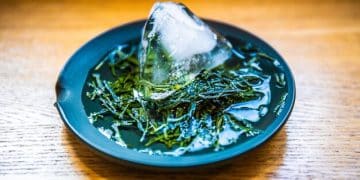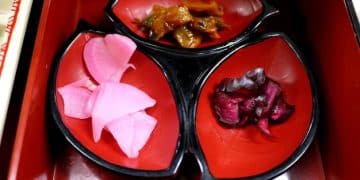Unlock Umami: Unexpected Japanese Ingredients for Home Cooking
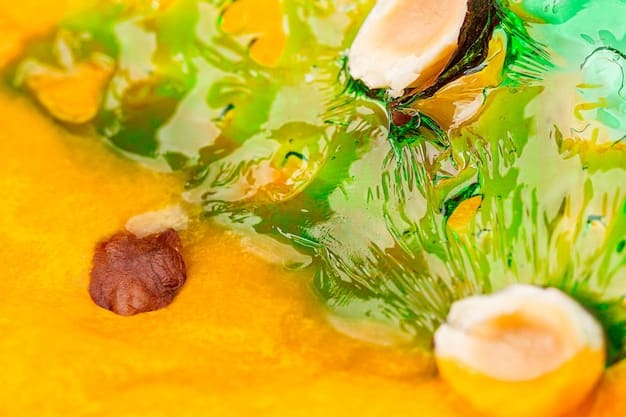
Unlocking Umami involves discovering the rich, savory flavor in Japanese cuisine through unexpected ingredients like kombu, dried shiitake mushrooms, and yuzu kosho, enhancing your home cooking with deeper, more complex tastes.
Ready to elevate your cooking with the magic of umami? Discover how Unlocking Umami: 3 Unexpected Japanese Ingredients to Elevate Your Home Cooking This Year can transform your meals into culinary masterpieces.
Unveiling the Essence of Umami in Japanese Cuisine
Umami, often described as the fifth taste, is the savory, mouthwatering flavor that adds depth and complexity to food. It’s a cornerstone of Japanese cuisine and understanding it can revolutionize your home cooking. Let’s explore the concept and importance of umami in Japanese dishes.
Umami is more than just a taste; it’s an experience. It lingers on the palate, creating a sense of satisfaction and richness. This savory flavor is naturally present in many ingredients, and the Japanese have mastered the art of extracting and combining these elements to create harmonious and delicious meals.
The Science Behind Umami
Scientifically, umami is attributed to the presence of glutamate, an amino acid, and nucleotides like inosinate and guanylate. These compounds bind to specific receptors on our tongues, triggering the sensation of umami. Japanese cuisine cleverly utilizes ingredients rich in these compounds to maximize flavor.
- Glutamate: Found in kombu, tomatoes, and aged cheeses.
- Inosinate: Present in dried bonito flakes (katsuobushi) and meats.
- Guanylate: Abundant in dried shiitake mushrooms.
By combining ingredients high in glutamate and inosinate or guanylate, a synergistic effect occurs, enhancing the umami sensation far beyond what each ingredient could achieve on its own. This is why traditional Japanese stocks like dashi are so intensely flavorful.
Umami is not just about adding flavor; it’s about balancing and enhancing the natural tastes of ingredients. It rounds out the palate, making dishes more satisfying and well-rounded. Once understood, it transforms simple meals into unforgettable culinary experiences.
Kombu: The Ocean’s Secret to Deep Flavor
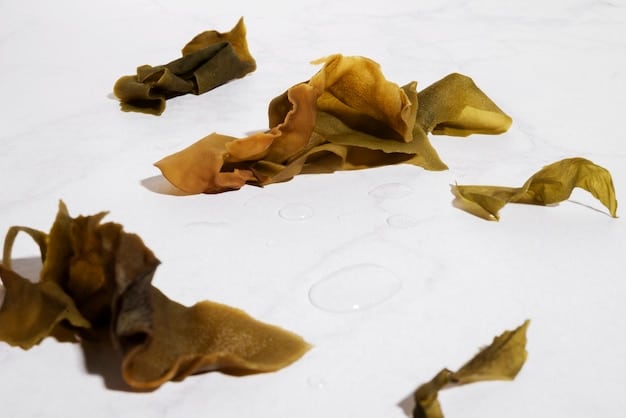
Kombu, a type of kelp seaweed, is a foundational ingredient in Japanese cooking, renowned for its high glutamate content. It’s the key to making authentic dashi, the flavorful broth that serves as the base for miso soup, noodle dishes, and countless other recipes. Here’s how to harness its power.
Kombu is harvested from the cold waters surrounding Japan and carefully dried to concentrate its umami-rich goodness. Its subtle yet profound flavor can elevate even the simplest dishes, making it an indispensable ingredient for any home cook looking to explore Japanese cuisine.
How to Use Kombu: A Step-by-Step Guide
Using kombu correctly is essential to extracting its full flavor. Follow these steps to make perfect dashi every time:
- Wipe the Kombu: Gently wipe the surface of the kombu with a damp cloth to remove any excess salt or debris. Avoid washing it vigorously, as this can remove some of the umami compounds.
- Soak in Water: Place the kombu in a pot of cold water and let it soak for at least 30 minutes, or up to several hours. This allows the kombu to rehydrate and release its flavor.
- Gently Heat: Slowly heat the water with the kombu over low heat. Just before the water starts to boil, remove the kombu to prevent it from becoming bitter.
- Simmer (Optional): For a richer flavor, you can simmer the kombu for a short period after removing it.
- Strain: Strain the dashi to remove the kombu, and it’s ready to use.
The leftover kombu can be repurposed in other dishes. Try slicing it thinly and adding it to stir-fries, simmered dishes, or even salads. It’s a versatile ingredient that adds depth and nutrients to any meal.
Dried Shiitake Mushrooms: Forest Flavor Unleashed
Dried shiitake mushrooms bring an earthy, intense umami flavor that’s different from kombu but equally essential. The drying process intensifies their guanylate content, making them a potent flavor enhancer.
These mushrooms are more than just a source of umami; they also offer a unique texture and a host of health benefits. Incorporating dried shiitake mushrooms into your cooking can add depth, complexity, and a touch of rustic charm to your dishes.
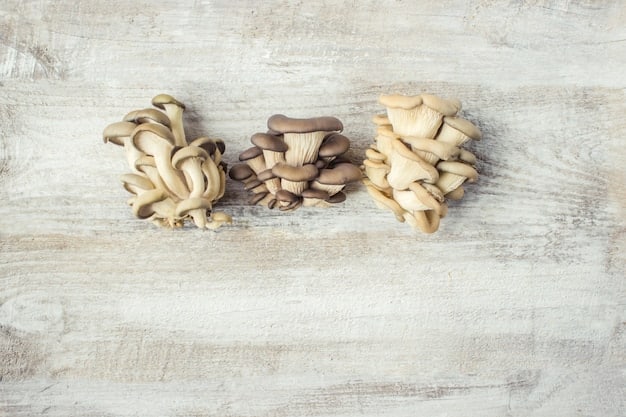
Maximizing Flavor with Dried Shiitake Mushrooms
To get the most out of dried shiitake mushrooms, proper rehydration is key:
- Soak in Cold Water: Place the dried shiitake mushrooms in a bowl of cold water, ensuring they are fully submerged.
- Refrigerate: Cover the bowl and refrigerate for at least 3 hours, or preferably overnight. This slow rehydration process draws out their flavor and creates a rich, umami-packed soaking liquid.
- Squeeze Gently: Before using the mushrooms, gently squeeze out any excess water. Be sure to reserve the soaking liquid; it’s liquid gold!
- Use Both: Use both the rehydrated mushrooms and the soaking liquid in your recipes to maximize the umami impact.
The rehydrated shiitake mushrooms can be sliced and added to soups, stews, stir-fries, and rice dishes. Their firm texture and earthy flavor make them a versatile ingredient for a wide range of culinary applications.
Yuzu Kosho: A Citrusy, Spicy Umami Bomb
Yuzu kosho is a fermented Japanese condiment made from yuzu zest, chili peppers, and salt. It packs a powerful punch of citrusy aroma, spicy heat, and umami depth. Its complex flavor profile makes it a perfect addition to sauces, marinades, and as a finishing touch to grilled meats and vegetables.
This vibrant paste is a testament to Japanese ingenuity in flavor creation. A small dab can transform a dish, adding layers of complexity and intrigue that are sure to impress. Yuzu kosho is not just a condiment; it’s a culinary secret weapon.
Incorporating Yuzu Kosho into Your Recipes
Yuzu kosho’s versatility shines when used creatively. Here are some ideas to get you started:
- Marinades: Mix yuzu kosho with soy sauce, sake, and ginger to create a flavorful marinade for chicken, fish, or tofu.
- Sauces: Add a small amount of yuzu kosho to ponzu sauce or other citrus-based sauces for an extra layer of complexity.
- Finishing Touch: Use yuzu kosho as a finishing touch for grilled meats, roasted vegetables, or even avocado toast.
- Soups: Stir a tiny amount of yuzu kosho into miso soup or ramen for a burst of flavor.
- Dips: Combine yuzu kosho with mayonnaise or sour cream for a unique and addictive dip for vegetables or chips.
Experiment with yuzu kosho in your favorite recipes to discover new and exciting flavor combinations. Its unique blend of citrus, spice, and umami will quickly make it a staple in your kitchen.
Dashi: The Cornerstone of Japanese Flavor
Dashi is a clear stock or broth used in Japanese cooking. It forms the base for miso soup, clear broth soups, noodle broths, and many simmered dishes. Dashi is made by briefly boiling kombu (dried kelp) and katsuobushi (dried bonito flakes) in water.
There are may forms of Dashi that the world is slowly becoming aware of, from basic recipes to complex stock processes, Dashi is vital for the umami and authenticity of your Japanese dishes.
Making Authentic Dashi at Home
Creating dashi is a straightforward process, but the quality of the ingredients and the technique used greatly influence the final result. Here’s a breakdown of the most common dashi types and how to make them.
- Kombu Dashi:
Simply simmering kombu in water produces a delicate, vegetarian dashi. This version is excellent for dishes where you want the subtle flavor of the ingredients to shine.
- Awase Dashi:
The most common type, awase dashi, combines kombu and katsuobushi. The kombu is simmered first, followed by the addition of katsuobushi near the end of the cooking process. This creates a rich, balanced broth.
- Shiitake Dashi:
Made from dried shiitake mushrooms, this dashi is vegetarian and adds an earthy, umami-rich flavor. It’s often used in vegan or vegetarian Japanese dishes and can be combined with kombu for added depth.
No matter the type, dashi relies on high-quality, authentic ingredients to achieve its distinctive flavor. Once mastered, it unlocks a world of culinary possibilities, allowing you to infuse your dishes with the true essence of Japanese cuisine.
Beyond the Basics: Creative Umami Combinations
Once you’re comfortable working with kombu, dried shiitake mushrooms, and yuzu kosho individually, try exploring creative combinations to unlock even deeper umami flavors. Experiment with different pairings and techniques to discover your own unique culinary creations.
The possibilities are endless! Don’t be afraid to push the boundaries and let your creativity guide you. By combining these unexpected ingredients, you can create dishes that are both delicious and truly memorable.
Unlocking Culinary Creativity
Once you’ve mastered the basics, push the boundaries and integrate these umami ingredients into unexpected dishes. Consider the following:
- Infused Oils: Gently heat olive or sesame oil with kombu and dried shiitake mushrooms to create an infused oil. Use this oil to sauté vegetables, drizzle over salads, or brush on grilled meats.
- Umami Butter: Combine softened butter with finely chopped yuzu kosho and dried shiitake powder to create a flavorful umami butter. Spread on toast, use to finish grilled fish, or melt over steamed vegetables.
- Seasoned Salts: Grind dried kombu and shiitake mushrooms into a powder and mix with sea salt to create a unique seasoned salt. Use this salt to season meats, vegetables, or even popcorn.
By experimenting with different umami combinations, you can create complex and nuanced flavors that elevate your cooking to a whole new level. The key is to be adventurous and trust your palate.
Sourcing and Storing Your Umami Ingredients
To ensure the best flavor and quality, it’s essential to source your kombu, dried shiitake mushrooms, and yuzu kosho from reputable suppliers. Look for high-quality products that are properly dried and packaged to preserve their flavor and freshness.
Proper storage is also crucial to maintaining the integrity of these ingredients. By taking the time to source and store them correctly, you can ensure that they will be ready to use whenever inspiration strikes.
Tips for Optimal Flavor
When it comes to umami ingredients, quality and storage matter. Here’s how to make sure you’re getting the best results:
- Kombu: Look for thick, pliable kombu with a deep brown color. Store it in an airtight container in a cool, dark place.
- Dried Shiitake Mushrooms: Choose mushrooms that are firm and have a rich, earthy aroma. Store them in an airtight container in a cool, dark place.
- Yuzu Kosho: Look for yuzu kosho that is brightly colored and has a strong citrusy aroma. Store it in the refrigerator after opening.
By following these tips, you can ensure that your umami ingredients stay fresh and flavorful for a long time, allowing you to experiment and create delicious dishes whenever the mood strikes.
| Key Point | Brief Description |
|---|---|
| 🌊 Kombu | Ocean kelp for dashi, adds savory depth. |
| 🍄 Dried Shiitake | Earthy mushrooms enhance umami when dried. |
| 🌶️ Yuzu Kosho | Citrus-chili paste, adds spice and umami. |
| 🍲 Dashi | Japanese broth base made with kombu. |
Frequently Asked Questions
▼
Umami is often referred to as the fifth taste, alongside sweet, sour, bitter, and salty. It provides a savory, mouthwatering sensation that enhances and deepens the flavor of foods, making them more satisfying.
▼
While both add umami, they have distinct flavors. Kombu is mild and oceanic, ideal for light broths. Shiitake offers a richer, earthier taste, better suited for stews and sauces. Use them to suit your dish’s needs.
▼
Yuzu kosho’s spiciness can vary. Generally, it offers a moderate heat, but it’s balanced by the yuzu’s citrusy notes. Start with a small amount and adjust to your taste preference to enjoy the flavor best.
▼
Not at all! Homemade dashi is surprisingly simple, typically requiring just kombu and katsuobushi (bonito flakes) simmered in water. It’s a quick process that significantly elevates the flavor of your dishes.
▼
You can find kombu, dried shiitake mushrooms, and yuzu kosho at most Asian supermarkets or specialty food stores. Online retailers also offer a wide selection, ensuring you access these umami enhancers easily.
Conclusion
By exploring these three unexpected Japanese ingredients – kombu, dried shiitake mushrooms, and yuzu kosho – you can unlock the secrets of umami and elevate your home cooking to new heights. Experiment with these ingredients, embrace the depth and complexity they offer, and embark on a culinary journey that will tantalize your taste buds and impress your friends and family.

